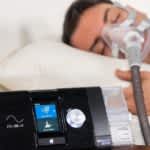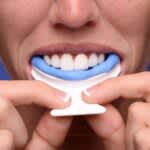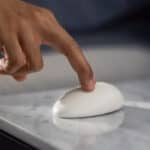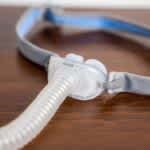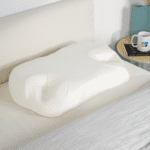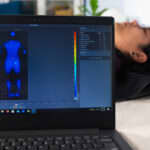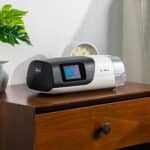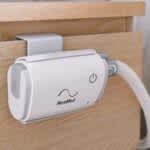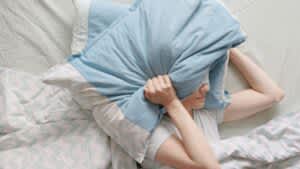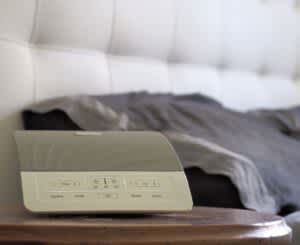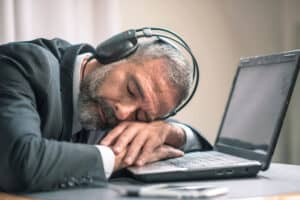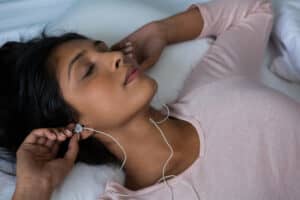Over the last decade, ASMR videos have become popular on the internet and social media. You may have seen these videos, which often consist of whispering, tapping sounds, and methodical movements. Or perhaps you’ve experienced ASMR firsthand when you heard someone whisper or you moved in a repetitive manner and experienced a relaxing, tingling sensation as a result.
We take an in-depth look at ASMR and its potential benefits. Learning more about ASMR can help you determine if this type of content can aid in relaxation or restorative sleep.
Key Takeaways
- Autonomous Sensory Meridian Response is a tingling sensation triggered by certain sounds or visuals.
- Some people use ASMR content as a relaxation tool before sleep, potentially reducing stress and anxiety.
- ASMR’s effects on sleep vary and not everyone finds it effective for sleep.
- Trying different ASMR triggers can help you identify any that work for you.
What Is ASMR?
ASMR stands for autonomous sensory meridian response. It is a sensory and emotional reaction to certain stimuli. ASMR typically causes a tingling sensation that begins at the top of the head in response to soft or gentle triggers, such as having your face lightly touched or hearing someone whisper.
A woman named Jennifer Allen coined the term ASMR in 2009, carefully choosing words that capture the physiological characteristics of the experience.
- Autonomous: The feeling is a result of an involuntary response from within the body.
- Sensory: The physical senses, including sight, sound, and touch, are provoked during the experience.
- Meridian: The word meridian refers to a flow of energy, and is a term sometimes used in traditional Chinese medicine.
- Response: ASMR is a spontaneous reaction to certain triggers.
ASMR often prompts a calm, pleasant feeling. Many people have become fans of ASMR over the past several years, likely as a result of these positive effects. While more research is needed to fully understand the science behind ASMR’s popularity and widespread use, anecdotal evidence suggests that ASMR may benefit health.
The most common reason people use ASMR is to relax. In fact, a recent survey found that over one-quarter of respondents use ASMR for relaxation on a daily basis. People report that ASMR videos help reduce their stress levels and improve mood. Emerging research also suggests that ASMR may be a useful tool to help people sleep better.
How Does ASMR Work?
ASMR typically causes a tingling sensation at the top of the head or back of the neck in response to certain images or sounds. Common triggers include seeing others make hand movements or hearing others whisper, scratch, or tap.
People have varied reactions to ASMR. For some, ASMR produces a pleasurable tingle or shiver that starts in the head and travels down the spine. The effect may last several minutes. Others may find this experience unpleasant, or do not experience the sensation at all.
People with certain personality traits seem to be more likely to experience ASMR. For example, research has found that people who experience ASMR are more creative, curious, or easily excited than those who don’t. Another study found that people who experience ASMR tend to be more mindful, or aware of themselves and the moment.
Psychological factors may play a role in a person’s likelihood of experiencing ASMR. For example, the need to feel loved and cared for may make a person more open to the effects of ASMR videos, and may explain why videos of close, personal attention being paid to the viewer are so popular.
Research shows that people who report having experienced ASMR in the past respond differently to ASMR content than those who do not report having had such a response previously.
For example, those who have experienced ASMR in the past were more likely to feel tingling and feelings of excitement and relaxation in response to ASMR videos. They also had lower heart rates and increased skin conductance levels, both indicators of biological ASMR reactions.
ASMR Triggers
Various ASMR triggers can be found in daily life. However, different people experience ASMR in response to different triggers.
Researchers have identified the most common ASMR triggers as hearing whispering or crisp sounds, watching repetitive tasks or slow movements, and receiving personal attention or affirmation.
Many people proactively turn to online videos seeking ASMR stimulation. According to YouTube, their site hosted 45 million ASMR videos in 2019. These videos attempt to induce ASMR experiences by portraying popular triggers, such as personal care, eating, cleaning, and examining items around the house.
ASMR videos also often include specific desirable sounds, such as whispering, scratching, chewing, keyboard typing, and fingernail tapping. Health care scenarios, such as eye and dental exams, also make up a part of ASMR video content. People who engage in ASMR videos report that they find the videos therapeutic and comforting.
Can ASMR Help You Sleep?
More scientific evidence is needed to confirm claims that ASMR promotes sleep. Anecdotal evidence suggests that ASMR can be used as a sleep aid, but there is little medical research exploring the relationship between ASMR and sleep quality. Since ASMR is not experienced by everyone and each person’s reactions to ASMR triggers are unique, it can be difficult to determine whether ASMR is a reliable way to promote sleep.
Research suggests that of people who view ASMR videos, 82% do so in order to fall asleep more easily. The most common time for engaging in ASMR is before bed, so the body and brain may already be primed for sleep when someone is viewing ASMR-related media.
Experts suspect ASMR may help with sleep by promoting relaxation. ASMR can be physically calming, with one study finding that even the sounds from ASMR content alone, without visuals, can trigger relaxation. Experts suggest that being so deeply relaxed may make a person feel sleepy.
ASMR has also been shown to improve mood, which can benefit sleep quality. For example, a more positive, less anxious mental state is often associated with healthy sleep. One study found that 80% of people who used ASMR experienced an improved mood. This finding may help explain why many people engage in ASMR to feel better and bring on sleep.
People who experience insomnia have also reported receiving benefits from ASMR content. In one study, both people with and without insomnia reported being more relaxed and in a better mood after watching ASMR videos.
The Brain and Sleep
Understanding the brain’s role in sleep can lead to a better understanding of how ASMR may influence sleep. Several parts of the brain are involved in sleep. For example, sound and image signals in the thalamus are active during rapid eye movement (REM) sleep, a sleep stage associated with dreaming, but inactive during other stages. Research has shown that ASMR may activate the thalamus.
During ASMR, another structure of the brain, called the medial prefrontal cortex, may also be triggered. This part of the brain is involved in the release of oxytocin, a hormone that is known to bring on feelings of calmness and sleepiness.
Some researchers have examined the brain activity in people as they experienced ASMR. They have suggested that ASMR can cause the brain to slip into a meditative state, which may provide an additional clue about its impact on sleep.
Other ASMR Benefits
ASMR has many other potential therapeutic uses in addition to possibly helping with sleep. For example, a survey found that 98% of people who watch ASMR videos do so for relaxation and 70% do so for stress relief.
People with depression, anxiety, and chronic pain have reported receiving benefits from ASMR content. In one study, 69% of people with moderate to severe depression stated that ASMR eased their symptoms. And 42% of people surveyed said that ASMR helped with their chronic pain.
Other study findings suggest there are other emotional benefits of ASMR. After watching ASMR media, survey respondents reported feeling excited, relaxed, less anxious, and more connected with other people.
There even seems to be temporary improvements in mood and pain among people who are exposed to ASMR but do not experience the tingly feeling usually associated with the response. This may suggest that even the quiet, focused aspect of ASMR can have a positive effect.
How to Use ASMR for Sleep
Sleep specialists recommend relaxation techniques to improve sleep habits, and this is where ASMR may come into play. Engaging in ASMR in a quiet, calm atmosphere near bedtime may help you wind down and feel sleepy. For full immersion in the ASMR experience, it can be helpful to use headphones to drown out background noise.
With ASMR, specific sounds and visuals that elicit a tingling from the head, down the spine, and onto the arms may be conducive for promoting sleep. These triggers often include:
- Soft sounds, such as whispers
- Crisp noises, such as rustling of paper
- Hair brushing or other personal care tasks
- Slow, repeating motions
Researchers continue to investigate ways ASMR may help promote sleep. One group of scientists examined how a specific type of sound called a binaural beat may be used in combination with ASMR to generate brain signals required for sleep. They determined that adding an ASMR trigger to a binaural beat created a relaxed state and therefore was more effective at facilitating sleep than the beat alone.
While initial research is promising and may lead to future therapies involving ASMR, triggering ASMR is not a replacement for medical treatment. It is currently most commonly used as a complementary tool by individuals seeking improvements in their sleep or emotional state, particularly when traditional treatments do not provide noticeable relief of symptoms.
Frequently Asked Questions About ASMR and Sleep
ASMR stands for autonomous sensory meridian response. The name describes the physical and emotional reactions some people experience after being exposed to certain triggers.
People who use ASMR report that it helps them feel more relaxed, become less anxious, and sleep better. ASMR has gained considerable popularity over the past decade.
ASMR produces a relaxed, pleasant feeling in many people. Watching someone whisper or tap their fingernails may cause a tingling sensation that begins in your scalp and travels down your spine. Some people say it brings on a euphoric feeling.
Many people use ASMR to help them sleep. These bedtime benefits are likely due to ASMR’s ability to bring on a state of relaxation. ASMR may also activate areas of the brain that are involved in sleep. However, there is no direct evidence that ASMR helps with insomnia.
Online videos are a popular source of ASMR stimulation. To use the videos to get a better night’s sleep, try watching them near bedtime in a quiet, relaxing environment.
Common ASMR triggers include listening to someone whisper, receiving personal attention, hearing crisp noises, and observing slow or repetitive movements. However, people respond uniquely to sensory encounters, so it may take time to figure out which types of ASMR videos work best for you.
Experts believe ASMR is a real experience that may provide therapeutic benefits. That said, ASMR has not been well studied. Most knowledge about ASMR comes from people who have experienced ASMR in daily life or videos.
References
Ask the Sleep Doctor
Have questions about sleep? Submit them here! We use your questions to help us decide topics for articles, videos, and newsletters. We try to answer as many questions as possible. You can also send us an email. Please note, we cannot provide specific medical advice, and always recommend you contact your doctor for any medical matters.


